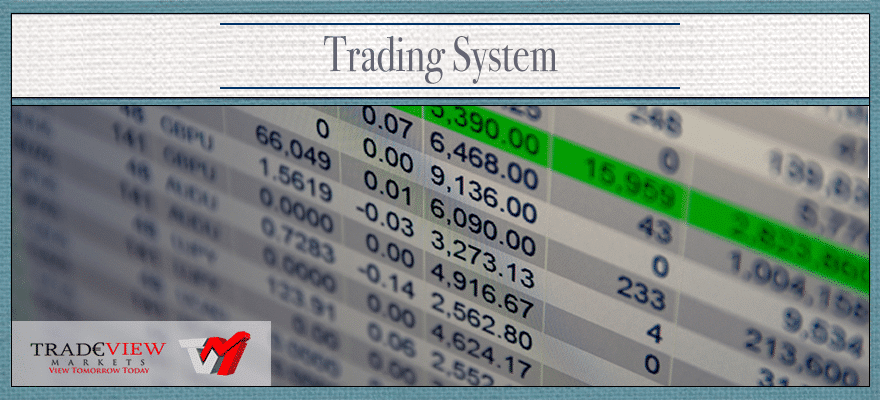A trading system is based on certain settings with certain rules related to buying and selling in the financial markets. It obtains a statistical analysis of a number of trades and contains past performances that have generated profits from it. Before naming this strategy as a trading system, it goes under a series of tests to guarantee its success and ability to remain successful for a period of time.
A trading strategy will never guarantee a fixed profit. It’s composed of certain algorithms or adjustments that will provide 'buy' and 'sell' signals to profit in a short amount of time. It’ll never guarantee a fixed profit ration since the market is always changing and new adjustments to the algorithms or the trading system need to change as well. Trading systems are often seen in time, with equities and Forex markets providing buying or selling signals constantly.
Currently the most common trading systems are based on swing trading, which maintains positions or open new ones while there is a trend, and also intra day trading systems, which take advantage of intra day trends and close any position at the end of the current day.
Automatic Trading Systems
Due to advances in technology, many traders choose to develop automatic indicators or automatic trading systems. These automatic systems enter buy-sell orders in the market without the need of an actual person. Most of these automatic systems are computer-based software integrated with certain rules allowing the software to perform and make trading decisions without the need of an individual.
Financial Markets Used By Automated Systems
Any Automatic Trading System can be incorporated into any financial market. The automatic system known in the stock market is called High Frequency Trading (HFT).
HFT uses high-level computers where it operates at a constant and rapid rate. The speed of each HFT is through algorithms. These algorithms analyze and execute orders in the market at very high speeds. In summary, the faster the execution, the more profitable… the slower, the less profitable. HFT execution accounts for nearly 50% of volume on an exchange.
There are also automatic systems in other financial markets. In the futures market, since the instruments traded have an expiration date, the automated trading system knows to close positions no later than the maturity date liquidating profit or loss in all executed orders. In forex trading, there is no need to worry about maturity dates. Each market provides different trading scenarios; therefore each trading system has to be appropriate for that specific market. In other words, an automatic trading system is not the same for stocks, futures and forex markets. Each has different rules of execution and market Liquidity .
Companies devoted exclusively to the research and development of trading systems insert their trading systems into the broker’s server. A direct connection to market liquidity and execution is essential for their strategy to avoid interruptions and server failure. Since the broker provides direct liquidity, all orders can be executed without the need of third party involvement.
The Need For Automatic Trading Systems
These automatic systems are needed to fulfill a goal. Their purpose is to follow a plan bearing loss when it comes and executing benefits when the time is right. The automated trading system is designed to maintain profitability and shut it down when experiencing failures. The automatic trading system trades strictly on the rules it’s programmed to follow, removing any human decision. It helps the strategy maintain a clean record and avoid any psychological decision from a person on whether it’s time to close an order or leave the order open for a longer period of time.
If we operate manually following the signals provided by the trading system, we can be swayed by our emotions and end up derailing a trading system. Any gains or losses may vary since they are left to the beliefs of an executor. An automatic trading strategy has already been tested and established a statistical probability. It can all change if we leave it to an individual’s emotions. This is why many companies and independent traders opt to create automated systems- they help avoid decisions based on their emotions and rather let their strategy do all the work.

















